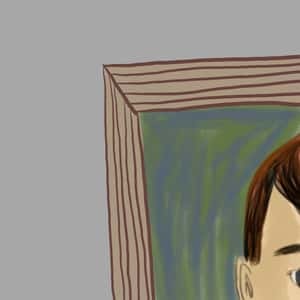The Picture of Dorian Gray Summary
The Picture of Dorian Gray is a novel by Oscar Wilde in which a man's portrait ages rather than his body.
- Basil Hallward, an artist, paints a portrait of Dorian Gray. Unbeknownst to Basil, the picture has somehow become enchanted, and it ages in Dorian's place.
- Free to sin without consequences, Dorian lives a life of debauchery and freedom. He acts on his every desire, committing unspeakable acts that leave his portrait disfigured.
- In the end, Dorian decides to reform. He plunges a knife into the portrait, thus breaking the spell. He is found dead in his home, horribly disfigured by his sins.
Summary
Dorian Gray, the title character of The Picture of Dorian Gray, is a decadent dandy of the Victorian era. Concerned with little but appearances, he lives a reckless, nonproductive existence. A crucial event in his life comes when Dorian meets Lord Henry Wotton in the studio of Basil Hallward, an artist, who has painted a portrait of the breathtakingly beautiful Dorian, now in his early twenties. Lord Wotton intrigues Dorian with his talk of the New Hedonism, which is reflected in the novel by Lord Henry’s giving Dorian a copy of Joris-Karl Huysmans’s À rebours (1884; Against the Grain, 1922), a novel that articulates this philosophy, the basis of which is the achievement of a complete realization of one’s nature.
Dorian now utters a Faust-like proposition. He expresses a willingness to surrender his soul if he can maintain his youth and physical beauty and have his portrait age in his place. Dorian hardly expects to have his wish granted and thinks little more of it. He is busy courting Sybil Vane, a talented young actress, who falls in love with him.
Ironically, Sybil’s being in love with Dorian robs her of her ability to act. In time, the very ability that first drew Dorian to Sybil has disappeared, and he rejects her unfeelingly. Having lost Dorian and her acting ability simultaneously, Sybil kills herself. Lord Henry, Dorian’s Mephistopheles, convinces Dorian that, in line with the New Hedonism, Sybil’s suicide is an experience that will help him to feel life more intensely and that it can be viewed as nothing but a source of personal growth.
When all of this happens, Dorian notices subtle changes in the portrait, which is still on display in his residence. A hint of cruelty, a line near the mouth, forms, but Dorian thinks little of it. Meanwhile, Lord Henry leads Dorian into all kinds of arcane activities that, in the tradition of the gothic novel, are suggested but never revealed explicitly, making them seem, perhaps, more horrible than they actually are.
By the time Dorian is thirty-eight years old—still looking twenty—the portrait has changed so drastically that it must be hidden under lock and key. Basil, the artist, alarmed at Dorian’s dissolute ways, urges him to change, to reform. Dorian shows Basil the portrait, now hideous, reflecting all the corruption of Dorian’s past years. Then he turns on Basil and stabs him. To conceal the crime, Dorian forces a chemist whom he has ruined to use his knowledge of chemistry to destroy the body. Finally, weeks later, shaken by what he has become, Dorian tells Lord Henry that he is going to reform. On returning home, he looks at the portrait and, seeing further deterioration in the visage before him, grabs the knife that he has plunged into Basil and sinks it into the grotesque portrait. A cry and a crash are heard. Servants rush to the locked room, forcing open the door. Inside, they find a portrait of an exquisite youth, and on the floor beside it, the body of a hideous, loathsome old man in evening dress, a knife through his heart.
Wilde’s novel provoked considerable outrage when it was published. The tenets of the New Hedonism expressed in the book flew in the face of conventional morality to the point that readers were profoundly shocked. Despite these objections, the novel succeeded artistically and attracted many readers.
The book presents Lord Henry’s credo within its first few pages, and the rest of the narrative is devoted to Dorian’s acting out of that credo. In a sense, Dorian Gray was born with the creation of Basil Hallward’s portrait. Readers are not introduced to Dorian Gray, the child. The Dorian that Wilde springs on his readers does not exist until the portrait exists.
According to a letter that Wilde wrote in 1894, he said that he saw in this novel three sides of himself. In Basil Hallward, he creates what he believes is a true perception of himself. In Lord Henry, he projects the person whom the world believes him to be. In Dorian, he presents the self whom he would like to be in some other age. How seriously one can take this assessment remains a matter of scholarly speculation.
The Lord Henry that Wilde projects is, in accordance with Wilde’s expressed philosophy, the ultimate artist. He molds raw material (Dorian), shaping it with sure hands into what he wills it to be. In this sense, he is a Pygmalion as much as he is a Mephistopheles.
See eNotes Ad-Free
Start your 48-hour free trial to get access to more than 30,000 additional guides and more than 350,000 Homework Help questions answered by our experts.
Already a member? Log in here.
